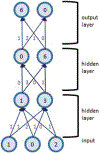Artificial Intelligence Explained for Nonexperts
- PMID: 31991447
- PMCID: PMC7393604
- DOI: 10.1055/s-0039-3401041
Artificial Intelligence Explained for Nonexperts
Abstract
Artificial intelligence (AI) has made stunning progress in the last decade, made possible largely due to the advances in training deep neural networks with large data sets. Many of these solutions, initially developed for natural images, speech, or text, are now becoming successful in medical imaging. In this article we briefly summarize in an accessible way the current state of the field of AI. Furthermore, we highlight the most promising approaches and describe the current challenges that will need to be solved to enable broad deployment of AI in clinical practice.
Thieme Medical Publishers 333 Seventh Avenue, New York, NY 10001, USA.
Conflict of interest statement
Florian Knoll reports grants from the National Institutes of Health during the conduct of the study. In addition, he is one of the inventors of US patent 20,170,309,019: A1: System, method and computer-accessible medium for learning an optimized variational network. Narges Razavian and Krzysztof J. Geras have declared no conflicts of interest for this article.
Figures



References
-
- Bishop CM. Pattern Recognition and Machine Learning. New York, NY: Springer; 2006
-
- Hastie T, Tibshirani R, Friedman J, Franklin J. The elements of statistical learning: data mining, inference and prediction. Math Intell 2005;27(02):83–85
-
- Goodfellow I, Bengio Y, Courville A. Deep Learning. Cambridge, MA: MIT Press; 2016
-
- Zhang R, Isola P, Efros AA. Colorful image colorization. Computer Vision – ECCV 2016. Available at: https://arxiv.org/abs/1603.08511. Accessed January 8, 2020
-
- Noroozi M, Favaro P. Unsupervised learning of visual representations by solving jigsaw puzzles. Computer Vision – ECCV 2016. Available at: https://arxiv.org/abs/1603.09246. Accessed January 8, 2020

